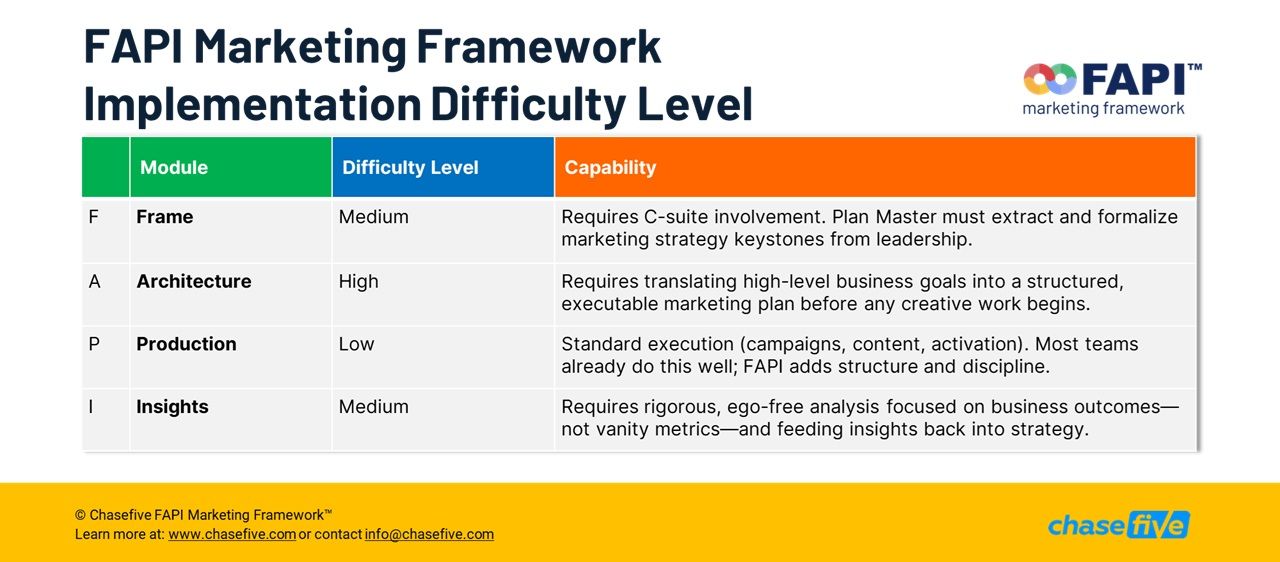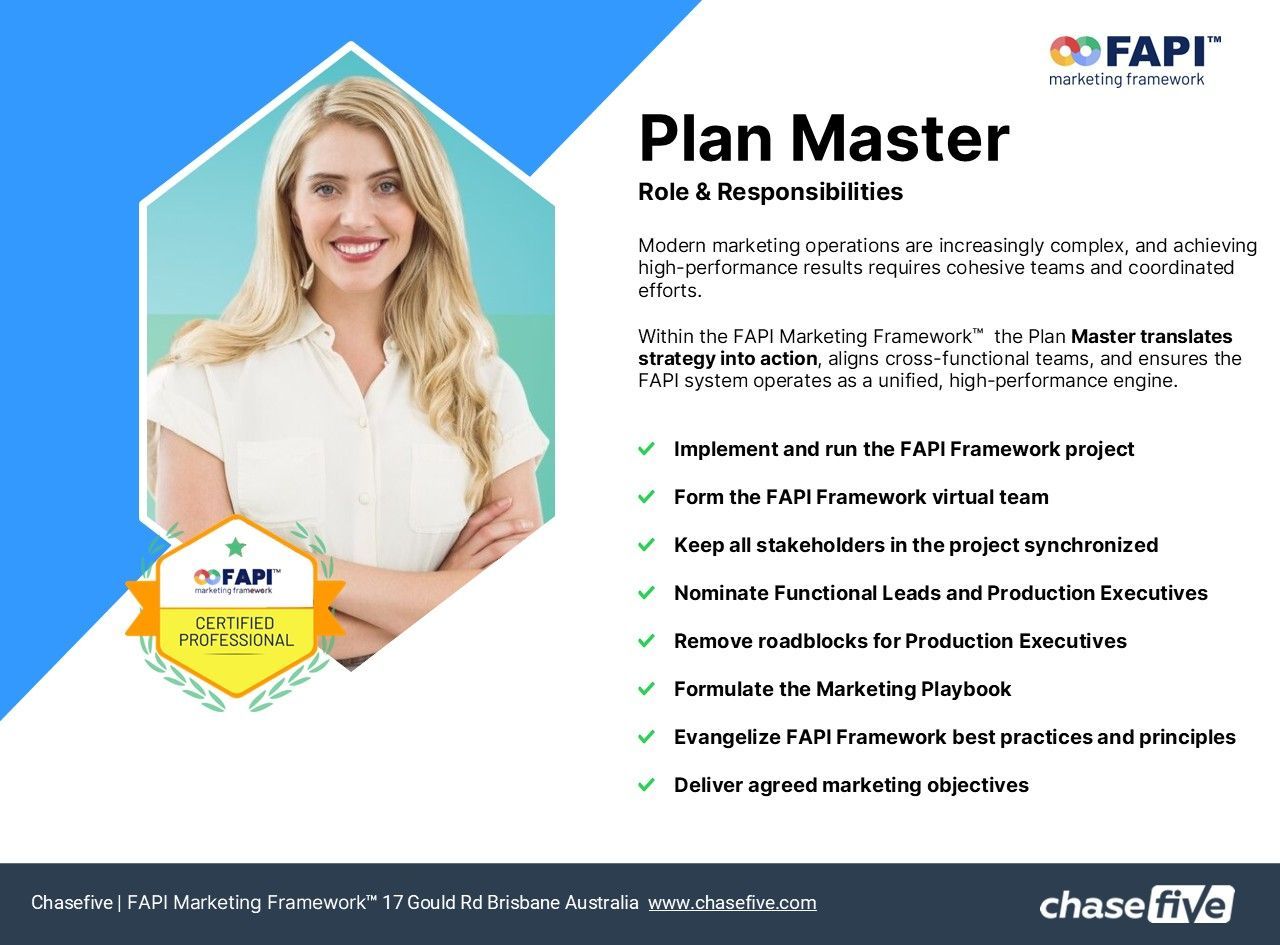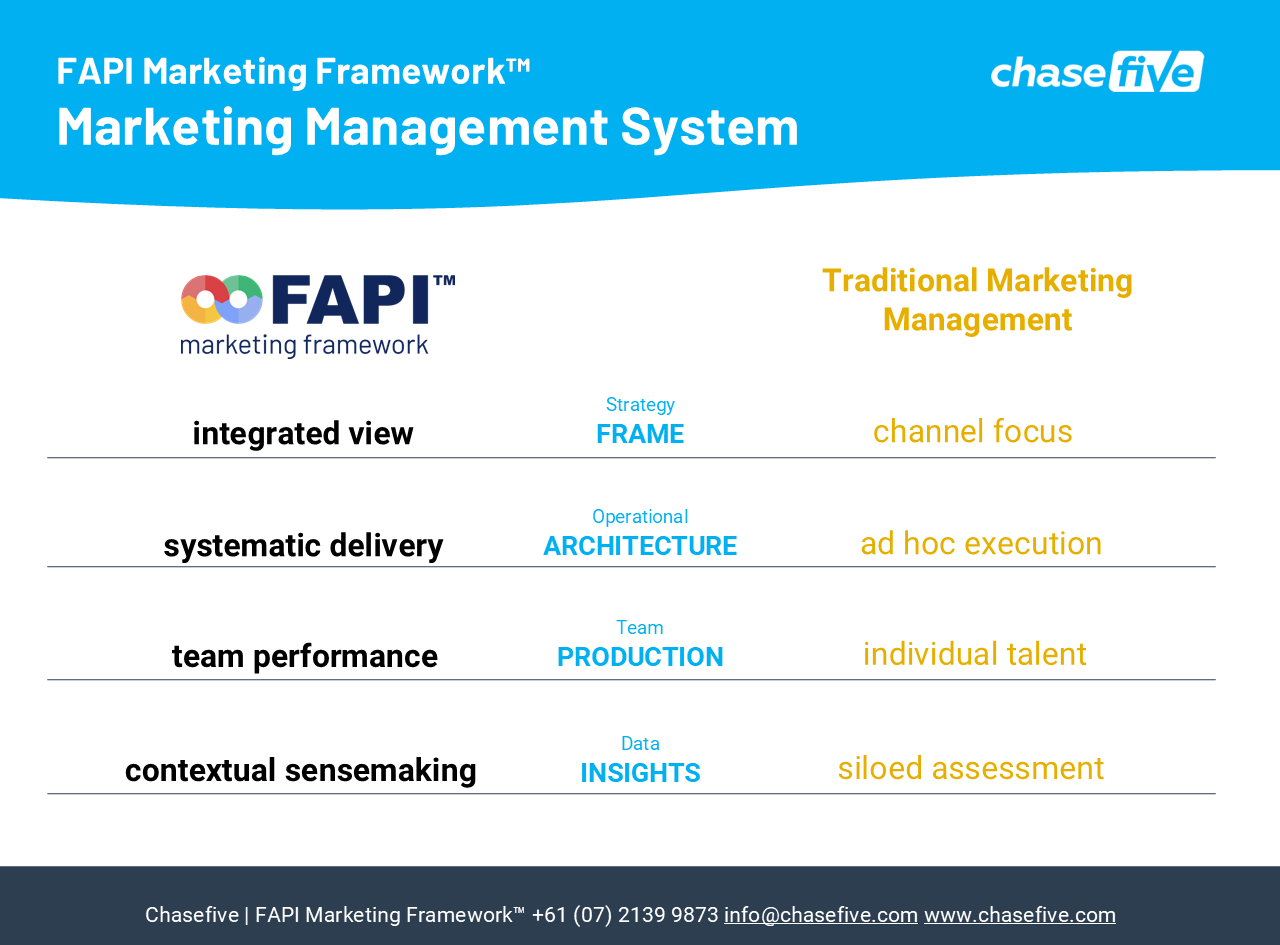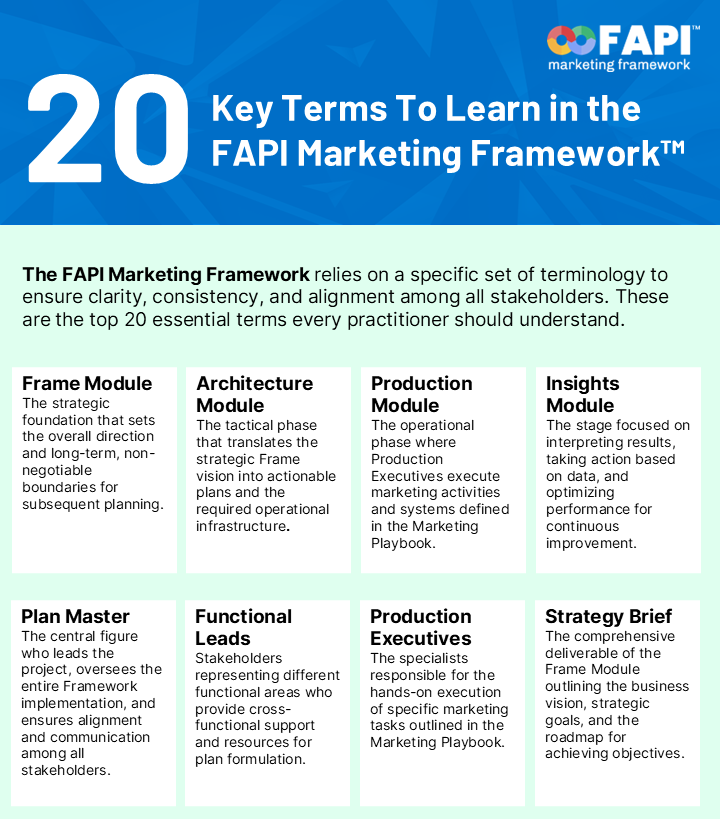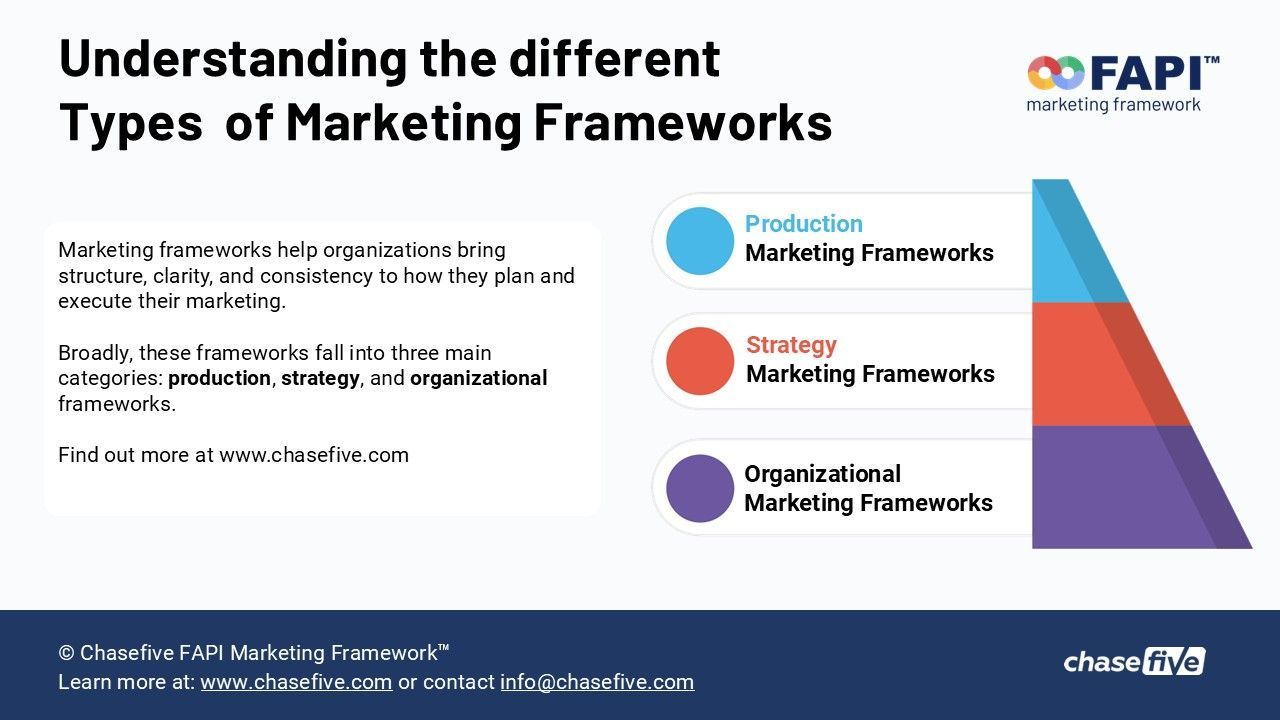A systems-based marketing approach to move beyond surface level solutions
In today’s competitive business landscape, the FAPI Marketing Framework offers significant advantages to marketing departments by providing a systems-based marketing approach to problem-solving. Instead of focusing solely on immediate challenges, this framework encourages marketers to understand how all components interact to form a cohesive whole.
The FAPI Marketing Framework is designed to guide business and marketing leaders in organizing and building high-performing marketing functions. Grounded in systems thinking principles, the FAPI Marketing Framework emphasizes addressing structural elements for sustained marketing success. This article explores how the FAPI Marketing Framework embodies systems thinking, offering a holistic approach to marketing strategy and execution.
Core Principles of FAPI as a Systems Thinking Methodology
Comprehensive, End-to-End Structure: The FAPI Framework provides a comprehensive structure covering all aspects of the marketing process, from planning to execution and analysis. This coherent approach ensures a seamless marketing experience for customers by connecting each phase of the marketing process.
Emphasis on Interdependencies: The Framework recognizes marketing as an interconnected system. The components within the four Modules of the FAPI Marketing Framework are intricately linked, forming a system of interdependencies. Each component plays a crucial role in the overall effectiveness and success of the marketing strategy.
Iterative and Adaptive Nature: The FAPI Marketing Framework diagram visually demonstrates the iterative nature of the marketing process, emphasizing continuous learning, adaptation, and optimization. This cyclical process ensures that the marketing strategy and execution are continually adapted to changing market conditions and evolving customer needs.
Holistic View: The FAPI Marketing Framework takes a holistic view, addressing the complexities of marketing organizations by considering them as parts of a larger system rather than in isolation. This approach is ideally suited for navigating the complex web of factors in modern marketing.
FAPI Marketing Modules as a System
The FAPI Marketing Framework is composed of four sequential Modules: Frame, Architecture, Production, and Insights. Each Module empowers marketing professionals and business leaders to fully realize their department's potential and achieve optimal results. The sequential nature of these Modules ensures a comprehensive and well-rounded marketing management structure.
Frame Module: Sets the strategic direction and vision for the marketing plan. It acts like an ‘auditʼ to ensure all strategic components are covered, agreed upon, and understood.
Architecture Module: Translates the Strategy Brief from the Frame Module into a detailed operational plan, defining marketing channels, performance metrics, and content requirements.
Production Module: Focuses on executing the marketing plan. Activities here translate strategy and planning into tangible actions that engage the target audience.
Insights Module: Ensures continuous improvement through data analysis and feedback. It ensures that data and analysis lead to informed decisions that optimize future marketing efforts, making the process continuous and iterative.
Key Roles and Responsibilities within the FAPI Marketing System
The FAPI Marketing Framework assigns clear roles to ensure successful implementation. The Plan Master acts as the central figure, leading the project and overseeing the entire Framework execution. Supporting the Plan Master are the Functional Leads and Production Executives. The Leadership Team provides high-level guidance and receives updates on project progress and ROI.
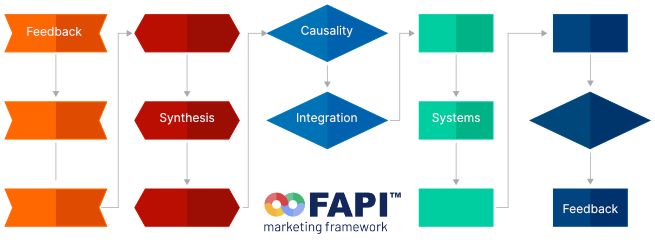
Benefits of Applying Systems Thinking through the FAPI Framework
Improved Alignment and Synchronization: The FAPI Marketing Framework helps organizations align their marketing efforts with their overall business strategy, ensuring that marketing activities are focused on achieving the company's goals and objectives.
Enhanced Efficiency and Waste Reduction: By streamlining processes and optimizing resource allocation, the Framework enables organizations to develop more efficient and effective marketing operations.
Data-Driven Decision-Making: The FAPI Marketing Framework supports organizations in measuring and optimizing every aspect of their marketing performance, providing a predictive view of marketing outcomes.
Fosters Innovation and Continuous Improvement: The FAPI Marketing Framework encourages creativity and controlled experimentation in the development of new marketing strategies.
The FAPI Marketing Framework provides a structured methodology that guides leadership teams through the process of building and organizing effective marketing functions. By applying systems thinking principles, the FAPI Framework helps businesses streamline their efforts, avoid common pitfalls, and ensure that marketing initiatives are both strategic and impactful. It embodies a holistic, interconnected, and adaptive approach, making it an invaluable tool for modern marketing management.
